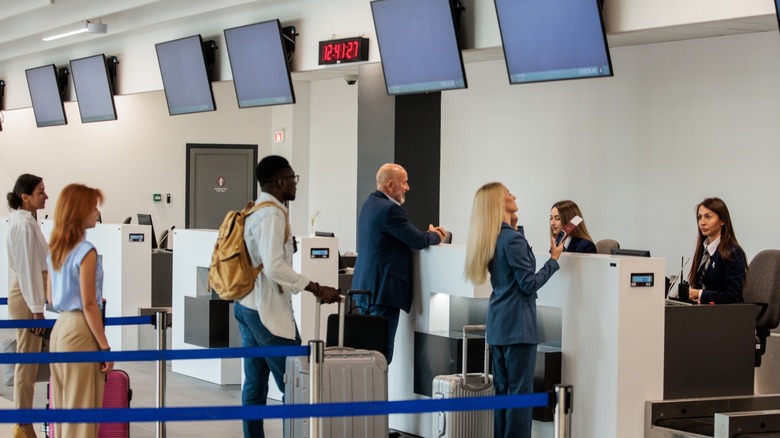Can You Fly With An Expired ID? Here's What The TSA Rules Say
Some people still have concerns about how safe flying is, but one thing most people can agree on is that it's the fastest and most convenient way to travel. On the contrary, though, airports can be hectic, so it's always a good idea to prepare your documents ahead of time to make passing through security a smoother process. However, mishaps can happen. For example, you might reach the airport counter only to discover that your ID has expired. It's easy to go straight into panic mode and start wondering what to do next. Fortunately, the Transportation Security Administration (TSA) has protocols in place for situations just like this.
Recently, the TSA updated its rules and policies to provide more flexibility for travelers. These updates are designed to help anyone traveling navigate stressful circumstances, all while still maintaining standard security protocols. In this guide, we'll walk you through how you can fly with an expired ID and the specific types of identification the TSA accepts. We'll also explain how the upcoming REAL ID deadline in 2025 might affect your travel plans moving forward.
Flying with an expired ID
If your ID has only just expired within the last year, you can usually still use it to fly within the United States. This applies to most forms of identification accepted by TSA, such as driver's licenses, passports (which you can now renew online), and state-issued ID cards. If your ID has been expired for more than a year, don't worry — you still have options. TSA offers an identity verification process. During this process, you'll need to provide personal information like your name, current address, and answers to specific questions to confirm your identity. If TSA can verify your identity, you'll be allowed to proceed through security. Although, you may face additional screening measures.
While traveling with an expired ID might make the process more complicated, it doesn't necessarily mean you'll be grounded. You just have to cooperate with the TSA officers during the verification process. However, if your identity cannot be confirmed or you choose not to participate in the process, you won't be permitted to pass through security, and there might be additional consequences. For international flights, the rules are much stricter. Expired IDs are not accepted, and some countries won't let you in unless your passport has at least six months left before it expires.
Everything you need to know about the Real ID deadline
The U.S. government created the REAL ID Act in 2005 to make state-issued IDs more secure and generally improve national security. Starting May 7, 2025, your state driver's license or ID card must meet these new REAL ID standards to be used for domestic flights in the U.S. If you don't have one, you'll have to use another form of identification, like a U.S. passport, to fly after the deadline. You can tell if your ID is REAL ID-compliant by looking for a star in the top-right corner. At the time of writing this article, there is no indication by TSA if the expired ID rule will still apply after the deadline.
To get a REAL ID, you'll need to visit your state's DMV in person and bring certain documents, like proof of identity and your Social Security card. Although the deadline to have a REAL ID has been delayed a few times, it's unsure if the due date will change again. The TSA has proposed an extension for two more years, but there is no definite decision on that yet.
For now, when flying domestically you still have several options when it comes to acceptable identification pending the deadline. Most people use their driver's license or U.S. passport, but the TSA also accepts other government-issued IDs, like permanent resident cards, passport cards, Global Entry cards, and military IDs. Since security rules can change, it's always a good idea to double-check the TSA website before your trip.


